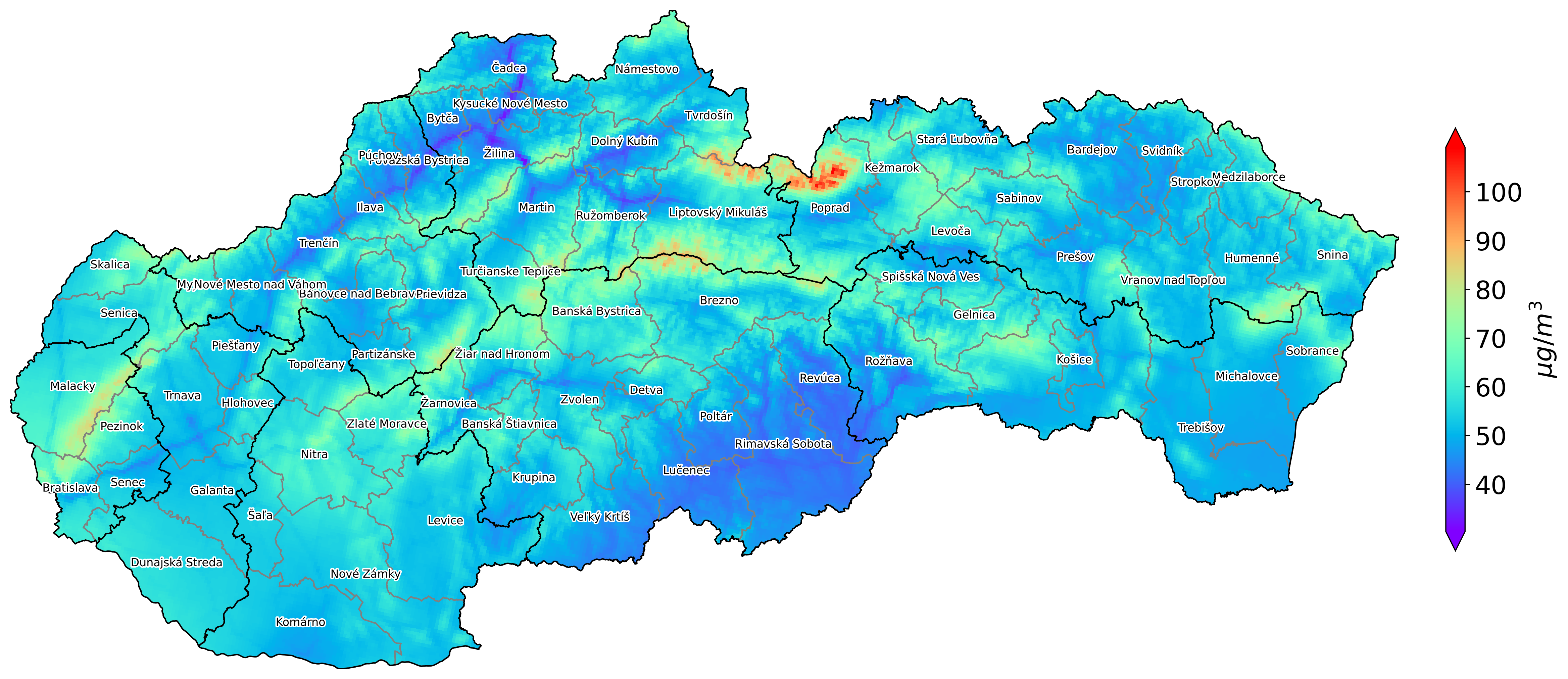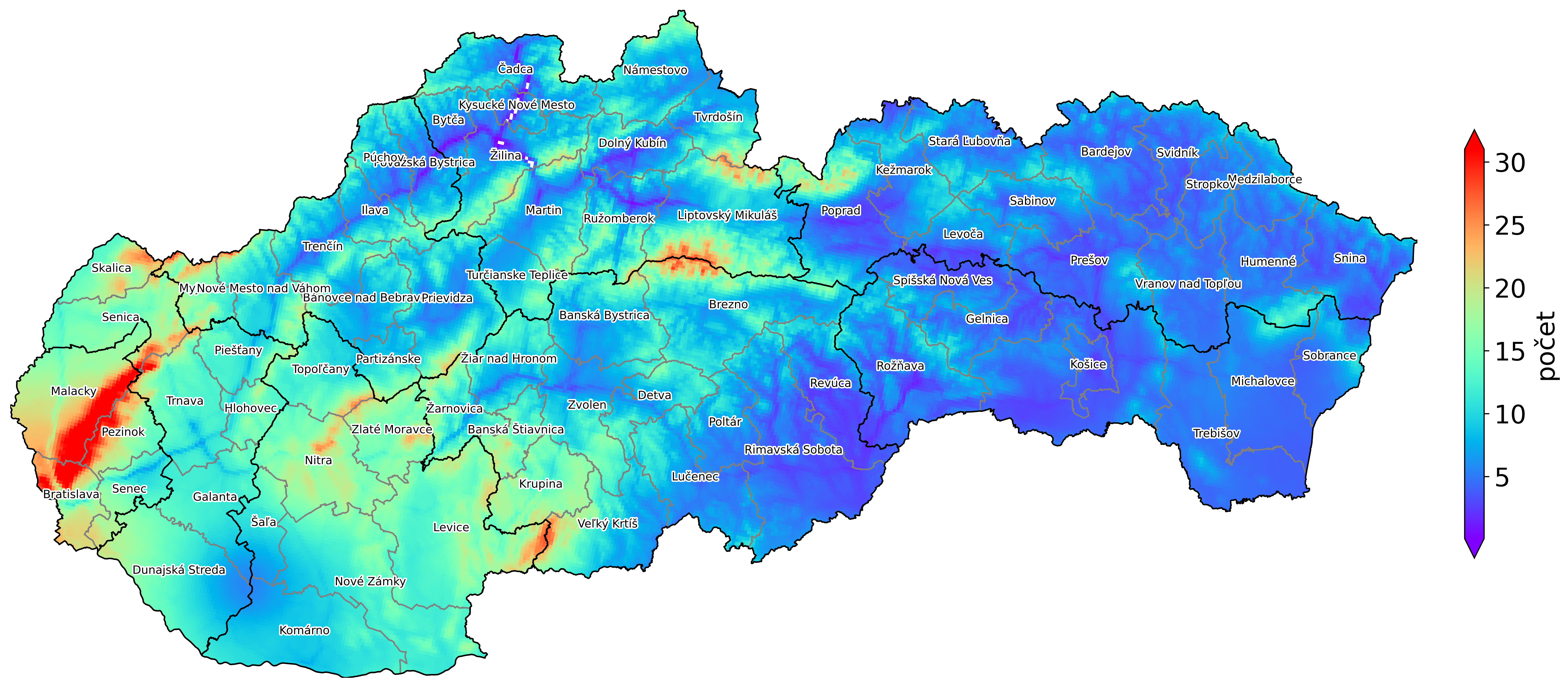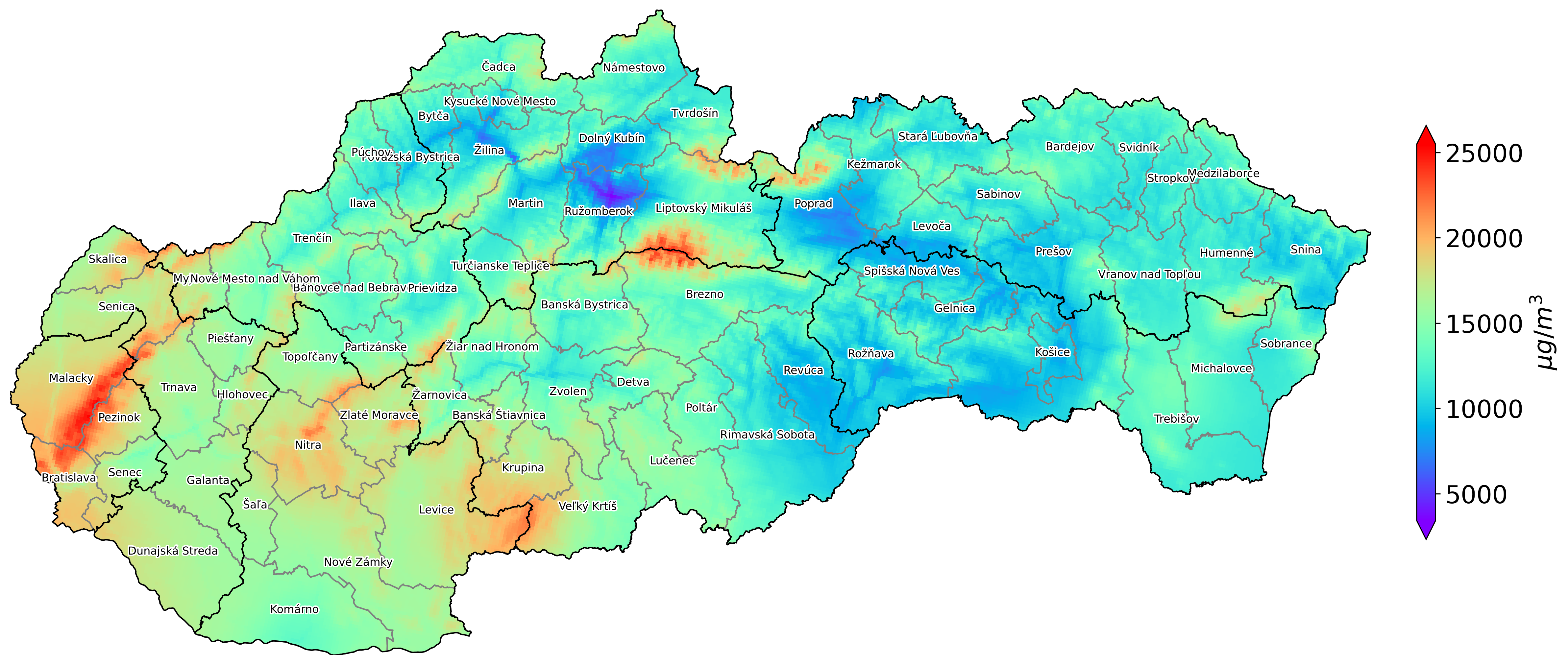Target values for ozone
| Goal | Average period | Target value |
| Protection of human health | the largest daily 8-hour mean value1) |
120 μg.m-3 is not exceeded more than 25 days per calendar year in a three-year average2) |
| Vegetation protection | from May to July | AOT40 calculated from 1-hour values 18000 (μg.m-3) × h averaged over five years2) |
Notes:
1) The largest daily 8-hour mean concentration value is selected by examining 8-hour floating averages calculated from hourly data and updated hourly. Each 8-hour average calculated in this way is assigned to the day on which it ends, i.e. j. the first calculation period for any day
is the period from 5:00 p.m. the previous day until 1:00 a.m. of the given day; the last calculation period for any one day is the period from 4:00 p.m. until the end of the given day.
2) If three-year or five-year averages cannot be determined on the basis of complete and consecutive sets of annual data, the smallest annual data required to check compliance with the target values are those for
target value for protection:
a) human health: valid data for one year,
b) vegetation: valid data for three years.
Long-term goals for ozone
| Goal | Average period | Long-term goal1) |
| Human health protection | the largest daily 8-hour mean value in a calendar year |
120 μg.m-3 |
| Protection of vegetation | from May to July | AOT40 calculated from 1-hour values 6000 (μg.m-3) × h |
Notes:
1) The date by which the long-term goals should be achieved is not determined.






